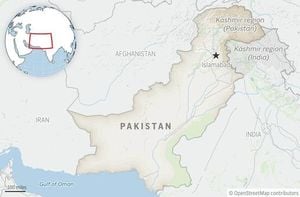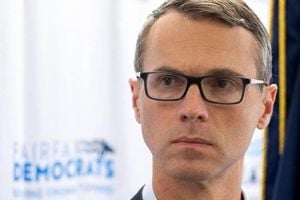On January 29, 2025, the skies over Washington D.C. witnessed one of the deadliest aviation disasters on U.S. soil since 9/11, when American Airlines Flight No. 5342 collided mid-air with a U.S. Army Black Hawk helicopter. The incident occurred as the commercial jet was inbound to Ronald Reagan Washington National Airport from Wichita, Kansas, carrying 60 passengers and four crew members. Tragically, all aboard both aircraft were presumed dead as wreckage fell to the Potomac River, marking this incident as the most fatal aviation disaster on American territory in over two decades.
The crash has catapulted national discussions about aviation safety, particularly following drastic changes initiated by President Donald Trump just days before the collision. On January 20, President Trump began shaking things up across federal agencies by removing key figures, including the heads of the Transportation Security Administration (TSA) and the Coast Guard. More controversially, he disbanded the Aviation Security Advisory Committee, which had provided oversight and advice on airline safety since its establishment after the 1988 Pan Am Flight 103 bombing.
Despite these committees historically having provided recommendations adopted for air travel safety, Trump's move wiped out the committee's membership, leaving it without any personnel to examine safety issues—thus raising serious questions about air travel oversight.
Critics have charged the new administration with neglecting the importance of air safety following the significant personnel cuts. “The order scrapping for the aviation safety board stated it was not consistent with the agency's mission toward national security,” questioned Democratic Senator Tim Kaine on CNN, pointing to the puzzling decision to eliminate groups linked to aviation security amid rising air travel concerns.
Amidst the wreckage, the crash has raised immediate calls for accountability, with various officials questioning Trump's recent leadership changes and their potential link to safety deficiencies. Former Transportation Secretary Pete Buttigieg tweeted, "President Trump now oversees the military and the FAA. One of his first acts was to fire and suspend some of the key personnel who helped keep our skies safe." This sentiment echoed through aviation circles, where many have long advocated for updated and enhanced air traffic control systems, which have been plagued by staffing shortages and aging technology.
Many experts assert, though, it is premature to directly link Trump’s actions to the crash itself; the investigation initiated shortly thereafter is expected to last several months. They argue the systemic issues plaguing air traffic control are longstanding and not solely attributable to recent personnel changes. Jim Cardoso, senior director of the University of South Florida’s Global and National Security Institute, acknowledged, "All the processes to control and deconflict air traffic have been well established for a long time." Yet the lack of effective oversight remains undeniable.Entering the discussion surrounding federal oversight, critics continue to spotlight the staffing shortages at the FAA, which stood thousands short of necessary air traffic controllers even before the alterations to hiring policies initiated by Trump.
Trump also publicly pointed fingers at diversity and inclusion hiring initiatives during the White House press briefings, stating, "For some jobs, we need the highest level of genius," implying such initiatives could have negatively affected safety protocols. Yet many aviation experts stress the required competencies for positions at the FAA have not changed and appropriately trained personnel remain accountable for ensuring safety standards.
Investigations conducted by the FAA have found the staffing situation at Reagan National Airport was below standard for the time of day, leading to operational stress as one controller was tasked with duties typically divided among two. While operational oversights exist, experts argue it remains integral to gather factual data from voice recordings, radar data, and black box analyses before drawing conclusions about the crash's causes.
“At this point, we don’t know enough,” remarked John Cox, a retired pilot and aviation security consultant. Emphasizing it is too early to involve political motivations, he pointed out crash investigations often embrace thorough fact-checking to ascertain causes without jumping the gun on speculation.
With the investigation moving forward, questions remain about how many more lives need to lose before comprehensive reforms address the longstanding issues within the Federal Aviation Administration and overall aviation security. The incident stands as sobering evidence of the link between political shifts and real-world consequences, highlighting the urgent need for sustained commitment to aviation safety reform.



